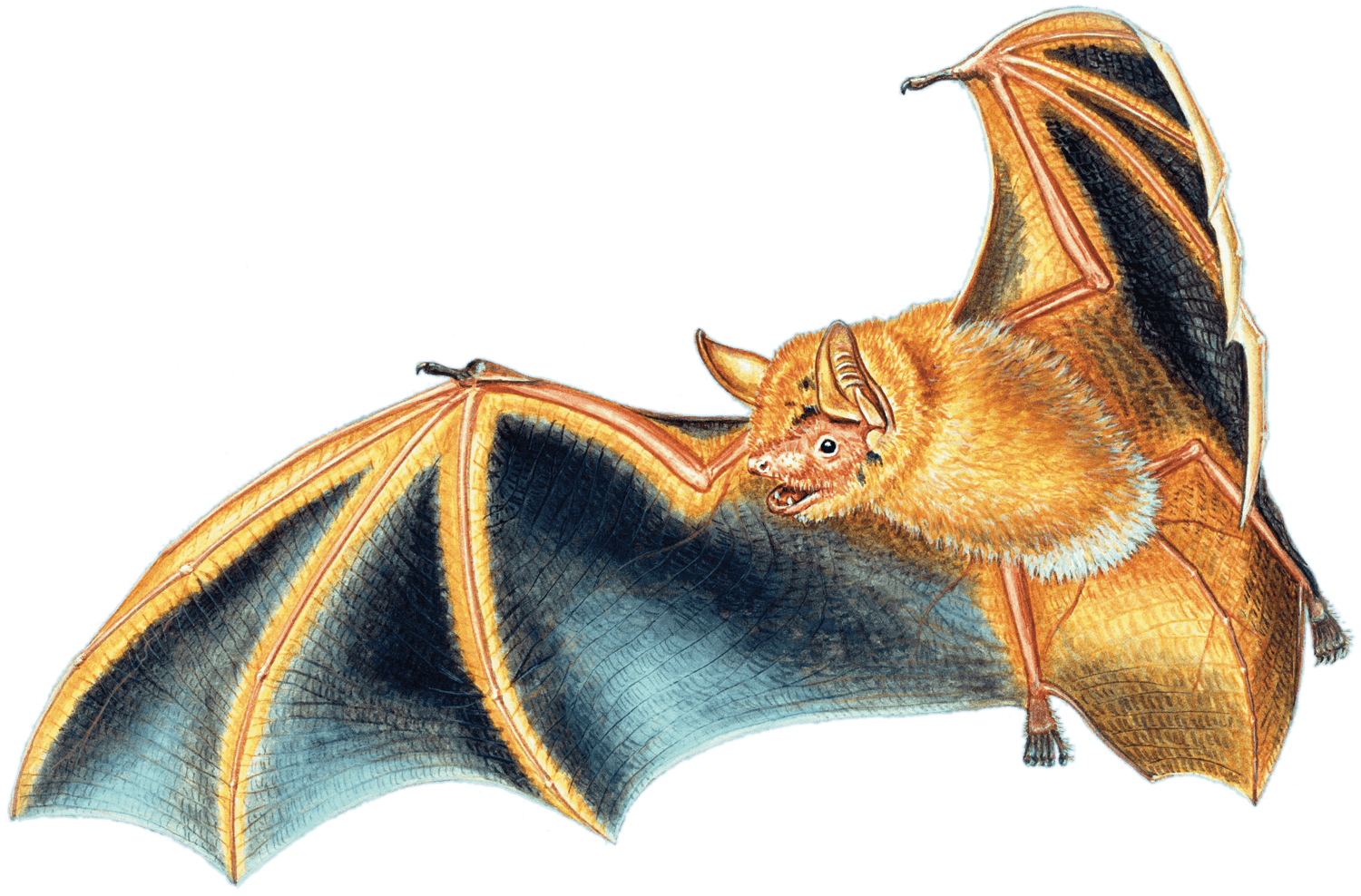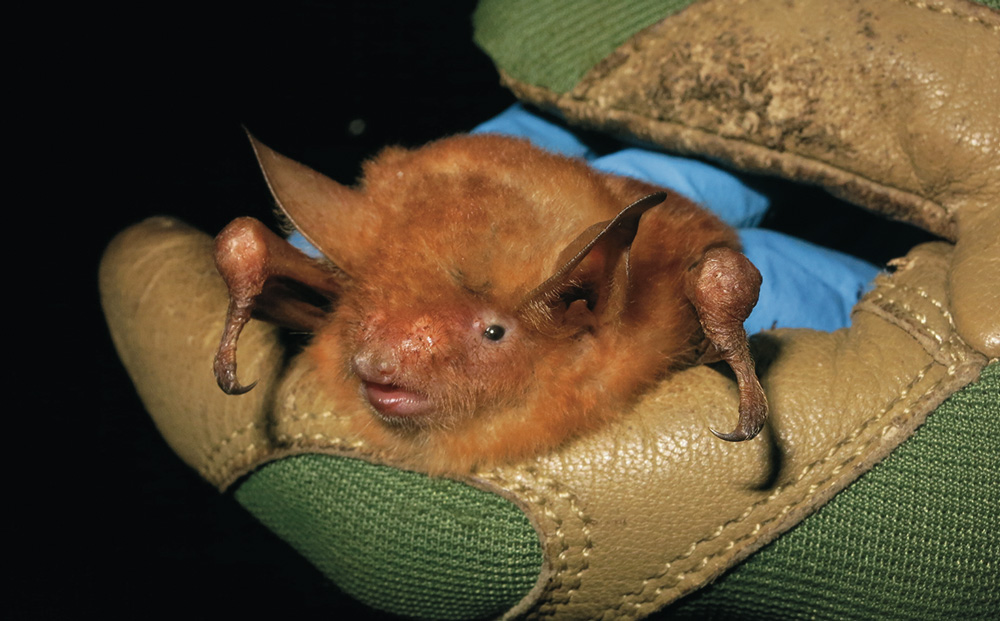

Nimba Myotis
Binomial
Family
Colony size
Size
Diet
Status

ccording to Dr. Winifred Frick, Bat Conservation International’s (BCI’s) Chief Scientist, using harp traps to survey bat species is somewhat like trick-or-treating: You never know what you’re going to get.
Once the delicate nylon threads of the traps are installed near bat roosts, scientists wait to see which bats are caught. Dr. Frick says scientists are often like children comparing their hauls of Halloween candy. As they gently move the bats in small cloth bags to a nearby processing station where the bats are weighed and measured, DNA samples are collected, and varying species are noted, you might hear scientists quietly noting “one of these” and “three of those” before the bats are released into the night sky.
An unexpected discovery
Following the discovery, researchers studied every aspect of the bat’s physical structure, including meticulously measuring all physical attributes, including its tiny teeth, and comparing all collected information with similar species. Researchers also compiled molecular data and provided some of the world’s foremost research institutions with tissue samples to conduct gene sequencing. They compared their data to samples and specimens from the American Museum of Natural History in New York, Natural History Museum in London, Field Museum in Chicago, and Smithsonian National Museum of Natural History in Washington, D.C.
West Africa’s bat diversity

With the discovery of Nimba myotis, BCI reports there are now more than 60 species of bats in the Nimba Mountains.
“The world still has so many places to explore, discover, and understand,” Dr. Flanders says. “Finding new species helps us better comprehend landscapes and environmental conditions because bats reflect healthy ecosystems.
“What is particularly notable,” he continues, “is that this new extremely colorful bat had not been documented in previous biodiversity surveys, indicating that the population of Myotis nimbaensis bats is very small, and one of the reasons I expect it will be classified as Critically Endangered by the IUCN.”
BCI is planning more field work in the area in 2023.
“What makes the Nimba range special is that the mountains rise from lowlands,” Dr. Frick says. “But the mountaintops have retained their biodiversity and a high number of endemics. The mountains are, for now, important ‘sky islands’ of shelter.”